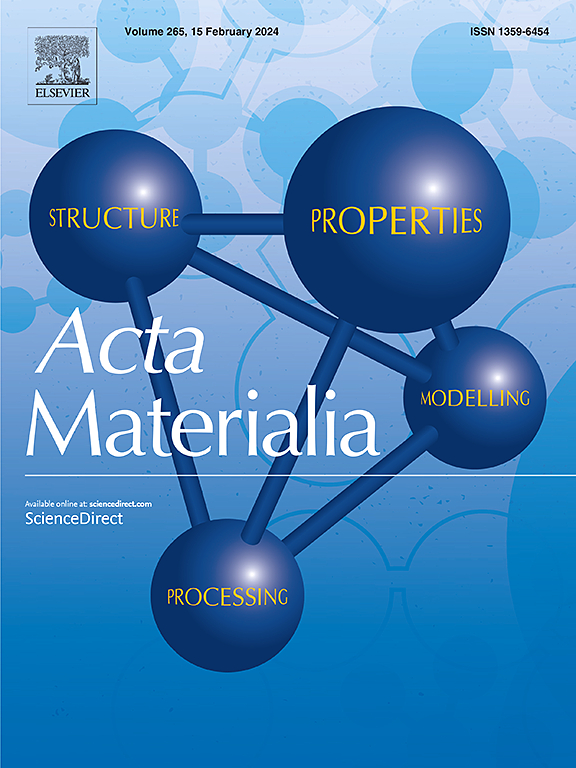Grain size dependent indentation size effect and deformation mechanism in Y2O3 nanocrystalline ceramics
IF 8.3
1区 材料科学
Q1 MATERIALS SCIENCE, MULTIDISCIPLINARY
引用次数: 0
Abstract
The indentation size effects and deformation mechanisms in nanocrystalline yttria (Y2O3) ceramics remain largely unexplored. Our work systematically studies the grain size dependent indentation size effect and plastic deformation mechanism of Y2O3 ceramics, with grain sizes varying from 18 nm to 10 μm. The grain size dependence of hardness shows an inverse Hall-Petch behavior at a critical grain size of ∼35 nm and below, together with an inflection in activation volume. For the Y2O3 ceramics in the classical Hall-Petch region, indentation size effect can be described by geometrically necessary dislocations based on the Nix-Gao model, while in inverse Hall-Petch region, the indentation size effect can be attributed to geometrically necessary shear transformation clusters. Further TEM analysis and numerical analyses support the findings that the unusual indentation size effect can be associated with the unique deformation mechanisms, including grain boundary sliding, grain rotation and grain boundary migration. Moreover, the deformation-induced grain rotation and grain boundary migration are found to result in grain growth in nanocrystalline Y2O3 ceramics. Our work sheds light on the unique mechanical behaviors of ceramics with extremely small grain sizes.


Y2O3纳米晶陶瓷中晶粒尺寸相关的压痕效应及变形机制
纳米氧化钇(Y2O3)陶瓷的压痕尺寸效应和变形机制在很大程度上仍未被研究。本文系统地研究了Y2O3陶瓷在18 nm ~ 10 μm晶粒尺寸范围内的压痕尺寸效应和塑性变形机理。硬度的晶粒尺寸依赖性在临界晶粒尺寸为~ 35 nm及以下时显示出相反的Hall-Petch行为,同时激活体积也发生了变化。对于经典Hall-Petch区域的Y2O3陶瓷,压痕尺寸效应可以用基于Nix-Gao模型的几何必要位错来描述,而在逆Hall-Petch区域,压痕尺寸效应可以归因于几何必要剪切转变团簇。进一步的TEM分析和数值分析支持了不同寻常的压痕尺寸效应可能与独特的变形机制有关,包括晶界滑动、晶界旋转和晶界迁移。此外,变形引起的晶粒旋转和晶界迁移导致了纳米晶Y2O3陶瓷的晶粒长大。我们的工作揭示了极小晶粒尺寸陶瓷的独特力学行为。
本文章由计算机程序翻译,如有差异,请以英文原文为准。
求助全文
约1分钟内获得全文
求助全文
来源期刊

Acta Materialia
工程技术-材料科学:综合
CiteScore
16.10
自引率
8.50%
发文量
801
审稿时长
53 days
期刊介绍:
Acta Materialia serves as a platform for publishing full-length, original papers and commissioned overviews that contribute to a profound understanding of the correlation between the processing, structure, and properties of inorganic materials. The journal seeks papers with high impact potential or those that significantly propel the field forward. The scope includes the atomic and molecular arrangements, chemical and electronic structures, and microstructure of materials, focusing on their mechanical or functional behavior across all length scales, including nanostructures.
 求助内容:
求助内容: 应助结果提醒方式:
应助结果提醒方式:


